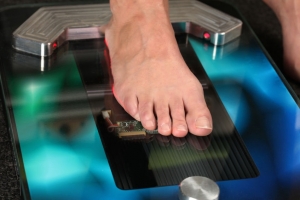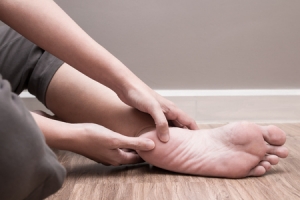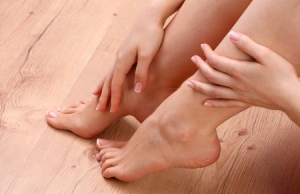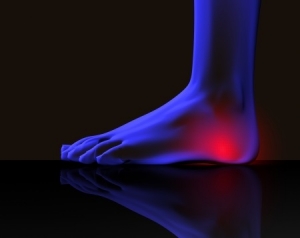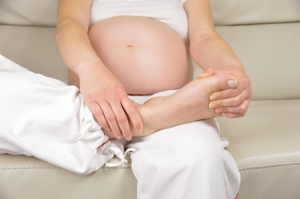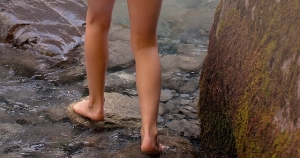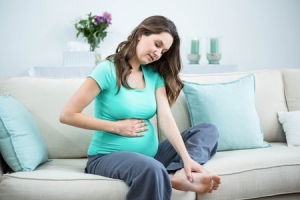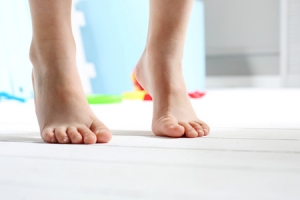Connect With Us
Blog
Displaying items by tag: heel pain
FAQ’s about Custom Orthotics
At Superior Foot & Ankle Care Center we often get questions from our Los Angeles County patients about custom orthotics. Below are some of the most frequently asked questions about this very effective, non-invasive type of podiatric treatment.
Q: What conditions can orthotics help treat?
A: Orthotics are footwear inserts that are used to provide support and reduce pain, discomfort, pressure or imbalance, and other symptoms caused by a wide range of foot and ankle deformities, injuries, and diseases as well as biomechanical problems. Some common conditions that can be treated with orthotics include flat feet, heel pain, arthritis, bunions, calluses, corns, big toe pain, and neuropathic ulcerations.
Q: What’s the difference between over-the-counter shoe inserts and custom orthotics?
A: Over-the-counter inserts can provide some arch support and treat minor discomfort and pain. Prescription orthotics, however, are made from a mold of your unique foot and therefore better able to address and correct your specific foot issues. Prescription orthotics are also constructed of more durable materials and can last a long time.
Q: What are some common kinds of prescription orthotics?
A: Orthotics come in many shapes and sizes and are made from a variety of materials depending on individual needs. They may take the form of insoles, arch supports, heel pads, or foot cushions. Generally, there are two classifications of orthotics. Accommodative orthotics offer cushioning and reduce pressure on a vulnerable area of the foot. Functional orthotics are used to treat foot problems caused by foot and ankle motion and alignment.
Q: How are custom orthotics made?
A: The first step is to have our podiatrists, Dr. Victoria M. Foley and Dr. Constance Ornelas, conduct a thorough examination of your feet and ankles and evaluate how they are impacting your knees, legs, and lower back. Once the foot doctor has a diagnosis of your podiatric disorder and a complete understanding of the biomechanics of your foot, a mold of your foot will be made from a plaster cast or a specialized computer scan that maps your foot structure and your gait. The podiatrist will then check to make sure the orthotic is fitted properly and monitor your progress.
If you would like to learn more about orthotics and whether or not they can help you, contact our Long Beach office at (562) 420-9800 office for an appointment today.
3 Causes of Back of Heel Pain
At Superior Foot & Ankle Care Center we know that pain at the back of your heel can be quite debilitating. What starts as an annoying ache can quickly turn into excruciating pain that makes walking difficult. For our Los Angeles County patients that may be experiencing these uncomfortable symptoms, here are three possible causes.
Haglund’s Deformity—this is a bony enlargement that forms at the back of your heel. This condition may be the result of an inherited structural issue like a high arch or a tight Achilles tendon. It can also be caused by wearing shoes with stiff backs that rub on the heel—hence this deformity’s other name: pump bump.
Bursitis—small sacs that are filled with fluid—known as bursas—are found throughout the body near joints and bones. They serve as protection from friction and provide a little extra lubrication. When a bursa becomes irritated due to repetitive motion or pressure it can become painfully inflamed. Haglund’s deformity is one cause of bursitis but it may also be the result of repetitive action from exercise or another medical condition such as gout, diabetes or arthritis.
Achilles Tendonitis—this long tendon that runs down the back of your lower leg connects your calf muscle to the heel bone. It can be aggravated or injured from overuse such as someone whose job involves climbing a ladder. Athletes and “weekend warriors” who suddenly increase the intensity of their workout routine may also suffer from Achilles issues.
The only way to find out for sure what’s causing your back of heel pain is to let our podiatrists, Dr. Victoria M. Foley and Dr. Constance Ornelas, examine your foot and conduct the necessary tests to get to the bottom of the problem. You can contact our Long Beach office at (562) 420-9800 office for an appointment. To learn more about foot health and conditions we treat check out our video library.
Foot Problems Caused by Staying at Home
At Superior Foot & Ankle Care we’ve seen an increase in foot pain among our Los Angeles County patients in recent months. For many, this is the result of the shutdown due to the pandemic. Many people have had their normal fitness routine interrupted. In addition, a simple at-home habit has had a surprising consequence. Going barefoot or wearing slippers or flip-flops around the house may be normal after work—but what about when you don’t leave the house to go to work? The increased amount of time in this type of footwear leads to several common conditions including:
- Flat feet
- Heel pain and plantar fasciitis
- Arch pain
Re-Entering an Active Lifestyle
As you begin to get back to your normal routine there are some steps you can take to help ease the transition and reduce foot discomfort.
- Wear good quality, supportive shoes, even when home. The trouble with going barefoot is that the arch of the foot is not supported. As your arch flattens, it puts strain on the plantar fascia (the long band of tissue that stretches across the bottom of your foot). This can cause both arch and heel pain. A cushioned insole is also helpful in preventing podiatric pain.
- Change positions frequently. Working from home means you’re not even walking to the car or going out at lunch. Be sure to get up at least once an hour if you’re sitting at a desk or try standing to work if you can find a counter that is the correct height. Stretch and rotate your feet and wiggle your toes throughout the day to stay flexible and keep up good circulation.
- Gradually increase activity. While it may be tempting to jump into an exercise program at full speed, it’s better to start slowly. You’re more prone to injuries if you try to push your body too far too fast after a period of being inactive. Walking is a great way to re-enter a more active lifestyle. Try fitting in a walk during lunch or at the end of the workday.
If you’re experiencing foot pain that you can’t explain or you start to have uncomfortable symptoms in your feet or ankles as you become more active, contact our Long Beach office at (562) 420-9800 and schedule an appointment with our podiatrists, Dr. Victoria M. Foley and Dr. Constance Ornelas.
Focus on Female Foot Health
March is Women’s History Month. At Superior Foot & Ankle Center we thought we’d help celebrate our Los Angeles County women by providing tips on taking good care of their feet.
Bunion Prevention
Although men can also get bunions, it is a deformity that plagues women more frequently and this is due in part to shoes. High heels that force the foot forward exerting excess pressure on the toes and styles with narrow, pointy toe boxes are a contributing factor in the development and progression of bunions. In some cases, the tendency for the toe joint to move out of place is genetic. There are exercises that can be done to strengthen toes and feet and help prevent bunions. The podiatrist may also recommend a custom orthotic device to realign the foot properly and relieve pressure on the toes. If you notice your toe moving out of place, even slightly, it’s important that you make an appointment at our Long Beach office by calling (562) 420-9800. The earlier our podiatrists, Dr. Victoria M. Foley and Dr. Constance Ornelas, are able to diagnose a bunion the greater chances of being able to slow its progression.
Importance of Good Footwear
Well-made footwear for women is important for other reasons beyond bunion prevention. It’s essential that your shoes have good arch support (often lacking in fashion boots and some other styles) in order to avoid heel pain. On average, women walk 3 miles more a day than men, and a cushioned insole can greatly increase comfort. A less positive statistic: it’s estimated that up to 90% of women are wearing shoes that are too small for their feet. Get your feet professionally measured when buying new shoes and understand that your foot size can change over time.
As You Age
It’s natural as you get older for your feet so show some signs of “wear and tear.” However, that does not mean that foot pain is “normal” as a senior. Fat pads on the soles and heels may deteriorate requiring you to add some gel or other padding to your shoes. Be on the lookout for stiffness in joints that may signal arthritis. It’s important to maintain a regular exercise routine and not to sit with your legs crossed for long periods of time to encourage good circulation. You may also notice symptoms in your feet that point to other, more serious systemic conditions such as diabetes or arterial disease. Alert your podiatrist to unusual symptoms such as loss of hair on your legs or toes, cold feet, or decreased sensation in your feet.
Healthy feet help successful women get where they want to go! If you have questions or concerns about your feet, don’t hesitate to contact us.
3 Common Causes of Heel Pain
One of the most frequent reasons that patients come to see us at Superior Foot & Ankle Care Center is heel pain. There are multiple causes of heel pain, however, and for that reason it’s important that if your heel is hurting, you have one of our podiatrists, Dr. Victoria M. Foley or Dr. Constance Ornelas examine your feet and determine the source of your discomfort. Once the foot doctor has diagnosed the condition that is causing your pain, the proper treatment plan can be decided upon.
Below are three common reasons heels hurt:
- Plantar Fasciitis—along the bottom of your foot there is a long band of tissue known as the plantar fascia that connects the heel bone to the ball of the foot. The plantar fascia is subject to large amounts of pressure and impact from normal daily activities. If you are a runner or serious athlete, your plantar fascia is getting an additional workout. When the plantar fascia becomes inflamed, it can cause heel pain. One telltale sign that plantar fasciitis is the cause of your heel discomfort is pain that is worse first thing in the morning. You may also experience pain in the arch of your foot and swelling on the bottom of your heel.
- Heel Spurs—spurs are outgrowths of bone. Heel spurs are often associated with, but are different from plantar fasciitis. When calcium deposits form in the heel, bone spurs can develop. Pressure from footwear and walking can cause redness, swelling, and painful inflammation. If you have heel spurs you may experience sharp pain or a dull ache.
- Flat Feet—although flat feet can also have several causes, the bottom line is that if your arch is collapsing, heel pain can result from it. Flattening of the arch puts your foot in a biomechanically abnormal position, which exerts excess pressure on the heel. This is why shoes that lack arch support can also be a heel pain trigger.
Depending on the source of your heel pain, there are many conservative treatments including: losing weight, custom orthotic and stretching exercises. Make an appointment at our Long Beach office in Douglas Park CA to find out why your heel is hurting.
Avoid Foot Problems During Pregnancy
Are you pregnant? Congratulations! At Superior Foot & Ankle Care Center, we know how excited you must be. We also want to do our part to help ensure that your pregnancy proceeds as comfortably as possible. Hormonal changes and weight gain that occur naturally during pregnancy can play havoc on the health of your feet. Below are some common problems pregnant women encounter and what to do about them.
Arch and Heel Pain—these are perhaps the most common complaints pregnant women have about their feet. As your pregnancy progresses, the added weight can have the effect of flattening your arch, resulting in symptoms similar to those of patients with flat feet. Pain in the arch and heel pain due to the strain put on the plantar fascia (the long band of tissue that runs along the bottom of your foot) are not uncommon. To combat this type of discomfort, look for shoes with extra arch support. In some cases, our podiatrists, Dr. Victoria M. Foley or Dr. Constance Ornelas will fit you with a custom orthotic device to wear in your shoes.
Ingrown toenails—hormones released by your body toward the end of your pregnancy to help relax ligaments to make birth easier can affect your feet by causing them to spread. Your shoes may start to feel too tight. When toes are pressed up against each other for long periods of time, ingrown toenails can develop. It may be necessary to buy shoes that are a larger size or wider width for the last trimester.
Swelling—excess fluid in your body, and the position of the baby may result in swollen feet and ankles. This can lead to discomfort and pain. The best way to reduce swelling is by putting your feet up frequently. Stretching, not crossing your legs when sitting and drinking lots of water will help too.
If your feet are giving you trouble during your pregnancy, make an appointment at our Long Beach office in Douglas Park CA by calling: (562) 420-9800. Our podiatrists will help get to the source of your discomfort and prescribe a safe and effective treatment.
Avoid Summer Foot Hazards
During the summer months your feet experience some particular challenges. At Superior Foot & Ankle Care Center we want to alert our patients to some potential foot and ankle problems and ways to prevent them.
Puncture Wounds and Cuts—going bare foot increases your risk of stepping on a sharp object. If this does happen and you sustain a puncture wound or cut be sure to clean it out completely and apply an antibiotic ointment and a bandage. Avoid swimming in lakes or the ocean while the wound remains open to prevent an infection from developing. If the area around the wound starts to feel warm or you notice redness or any pus or discharge, contact our Long Beach office immediately by calling: (562) 420-9800. Our podiatrists, Dr. Victoria M. Foley or Dr. Constance Ornelas will examine your foot and determine if you need treatment.
Fungal Infections—athlete’s foot, fungal toenails and warts are among the bacterial and fungal infections that are spread by direct contact. For this reason, we recommend keeping your feet covered in public places like community pools, gym locker rooms and showers and the nail salon.
Heel Pain—if flip-flops are your summer go-to shoes, you may notice an increase in heel pain. The average pair of flip-flops provides no arch support. Flattening of the arch exerts more pressure on your heel. If this is your footwear of choice, invest in a pair designed with sturdy soles and built in arch support.
Ankle Sprains—unfortunately many other summer shoe styles are also lacking in side, ankle and arch support. While these may be fine for dinner out or a special occasion, be sure not to wear them for extended periods of walking or sports activities as this likely to result in an ankle twisting injury.
Fortunately, a little common sense and smart choices can go a long way toward protecting your feet this summer. If you have foot pain or discomfort, don’t hesitate to contact us for an appointment.
Foot Health and Pregnancy
At Superior Foot & Ankle Care Center pregnant women will often come to our Long Beach office with foot concerns that they didn’t expect. Pregnancy changes your body in various and dramatic ways and your feet are not left out of the fun! Here are some foot and ankle conditions you may experience during the course of your pregnancy:
Ankle Turns/Sprains—to prepare your body for pregnancy and the passage of a baby through the birth canal hormones are released which help ligaments relax. Since these hormones cause all the ligaments in your body to relax you may find your ankle giving way more readily. This issue is made worse by the shifting of your center of gravity as the baby grows.
Swollen Feet and Ankles—retaining water is a normal (if uncomfortable) part of pregnancy. This extra fluid tends to accumulate in your feet and ankles. This can make feet feel sore and tired. Cut back on salt, drink plenty of fluids and be sure to elevate your feet for some time every day to help combat the swelling.
Foot pain—excess weight, even though temporary, can cause pain in the arch of your foot and even cause flatfeet. Heel pain is also common. Be sure to wear shoes that have extra cushioning and shock absorbing soles. Look for styles that provide good arch and ankle support as well.
Pregnancy can also exacerbate existing foot conditions, particularly those affected by weight or involving inflammation. Our podiatrists, Dr. Victoria Foley and Dr. Constance Omelas will evaluate your feet and ankles and help you find ways to keep existing problems in check. They will also discuss ways to prevent the other podiatric problems that pregnancy can bring and offer safe suggestions for relief of any foot pain or discomfort you encounter. Contact us for an appointment by calling: (562) 420-9800.
“Mom, My Foot Hurts”
At Superior Foot & Ankle Care Center, our board certified foot and ankle surgeons, Dr. Victoria Foley and Dr. Constance Omelas are experts in pediatric footcare. One of the issues in evaluating children’s feet is that the patients are not able to articulate just what the problem or discomfort is. That’s when podiatrists have to become detectives and help track down the condition affecting the child. Here are some of the more common complaints we hear from our young patients and what they might mean:
“It hurts in the back of my foot.” Heel pain in children can be either an overuse issue or due to developmental factors. Medical conditions such as plantar fasciitis or Achilles tendonitis can affect children just as they do adults if an injury has occurred during a sport or if too much repetitive exercise is straining a particular part of the foot. In cases of children ages 8-15, the growth plate at the back of the heel is still forming and this leaves a vulnerable area that can become inflamed and result in calcaneal apophysitis (also known as Sever’s disease, although it is not actually a “disease”).
“It’s too far to walk.” If children complain that their feet hurt after a long walk or that their feet feel “tired,” it can be a sign of flatfeet. This can be tricky to diagnose because children don’t develop arches until between the ages of four and six. The foot doctor has a number of ways to check for flatfeet and the solution may be as simple as an insert for the shoes that will help shape and train the arch to develop properly.
“Ow! Don’t touch my big toe!” Extreme pain in the side of a toe, especially if the toe looks red and swollen is most likely pointing to an ingrown toenail. If toenails are cut to short or children pick them off and they end up with a curved edge, the nail may start to grow down and into the skin. This causes extreme pain and, if the nail actually punctures the skin, can lead to an infection.
“There’s something on the bottom of my foot.” Plantar warts are hard growths that most often form on the balls of the feet or the heel. Caused by a viral infection that enters the skin through tiny cuts, it is very common in children. They may not hurt initially but can grow and spread. Usually a topical medication or freezing will remove the wart.
As children grow and become more responsible for their own personal hygiene parent see less of their feet. It’s important to periodically examine your child’s feet and to listen seriously to foot complaints. If your child is experiencing any discomfort or pain in the toe, foot or ankle, contact our Long Beach office for an appointment today.
Archives
Categories
- Featured (164)
- Blog (177)
- Ankle Care (6)
- Ankle Condition (2)
- Ankle Pain (0)
- Appointment Tips (2)
- Arch Pain (1)
- Arthritis (10)
- Athlete's Foot (6)
- Blister (1)
- Bunions (7)
- Calluses (1)
- Child Care (2)
- Circulation (1)
- Common Foot Conditions (4)
- Common Foot Problems (3)
- Corns (0)
- Custom Orthotics (1)
- Diabetes (10)
- Diabetic Foot Care (3)
- Diabetic Footwear (1)
- Edema (1)
- Exercise (4)
- Fall Prevention (1)
- Fitness (1)
- Flat Feet (2)
- Foot Care (19)
- Foot Care Safety Tips (3)
- Foot Care Tips (20)
- Foot Conditions (12)
- Foot Facts (3)
- Foot Health (6)
- Foot Odor (1)
- Foot Pain (5)
- Foot Problems (2)
- Foot Safety (1)
- Foot Surgery Tips (2)
- Foot Warts (2)
- Foot Wear (2)
- Fractures (1)
- Fungal Infection (2)
- General Health (0)
- Gout (5)
- Gout Treatment (0)
- Hammertoe (1)
- Health Tips (46)
- Heart Health (1)
- Heel Pain (0)
- Heel Spurs (0)
- Ingrown Toenails (4)
- Interesting Facts (2)
- Joint Pain (2)
- Leg Conditions (2)
- Leg Condtions (0)
- Men's Foot Health (1)
- Metatarsals (0)
- Nail Fungus (2)
- Neuropathy (1)
- Nutrition (2)
- Obesity (2)
- Osteoporosis (1)
- Pain Relief (5)
- Patient Communications (1)
- Pediatric Foot Conditions (5)
- Pediatric Foot Pain (2)
- Pedicure (1)
- Peripheral Arterial Disease (1)
- Plantar Fasciitis (2)
- Podiatrist Appointment (0)
- Pregnancy Feet (3)
- Proper Shoes (2)
- Senior Foot Care (7)
- Shoe Fit (1)
- Skin Cancer (3)
- Sports Injuries (2)
- Spring Foot Health (1)
- Summer Foot Health (2)
- Toe Pain (4)
- Uncategorized (5)
- Varicose Veins (2)
- Walking (1)
- Women Foot Health (3)
- Youth Sports (2)
